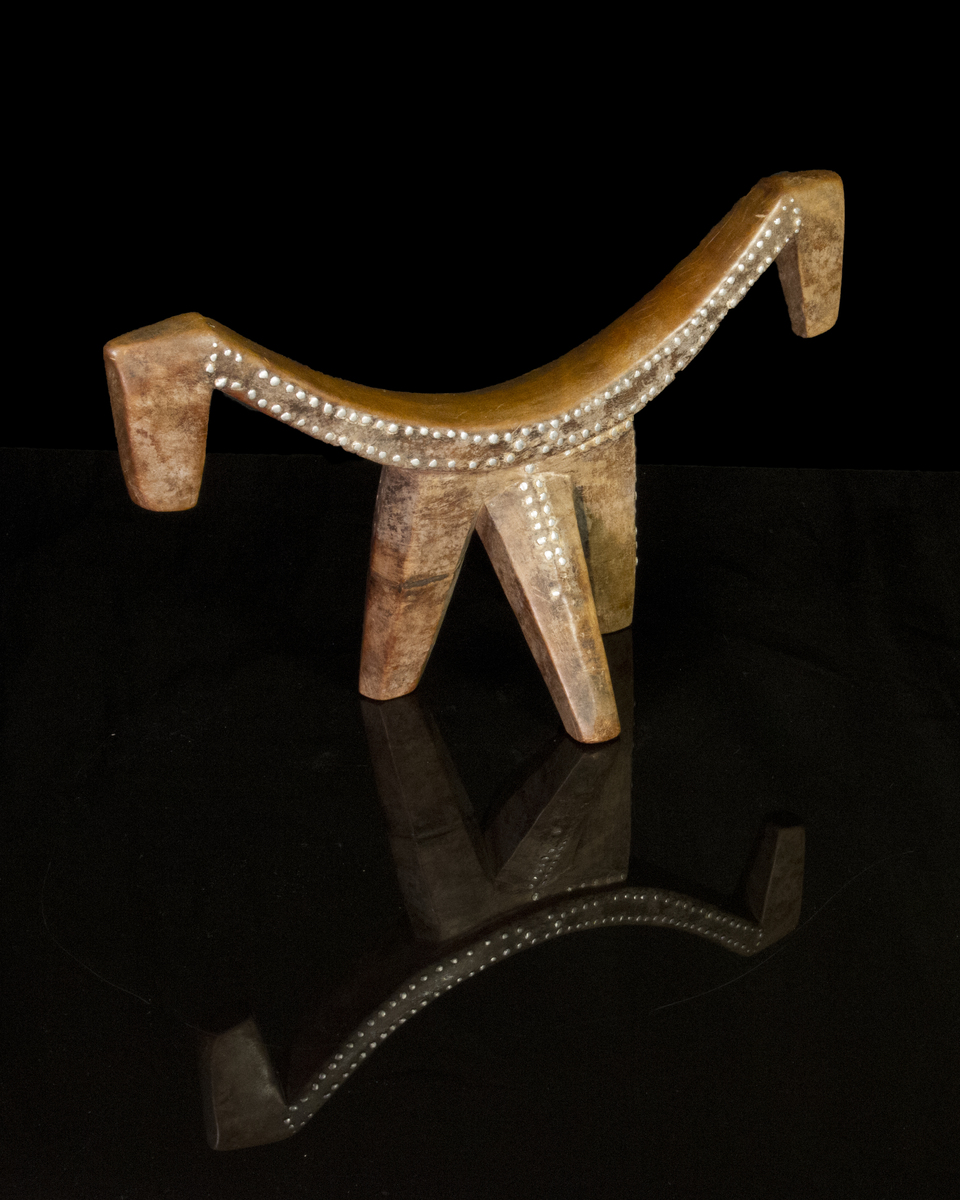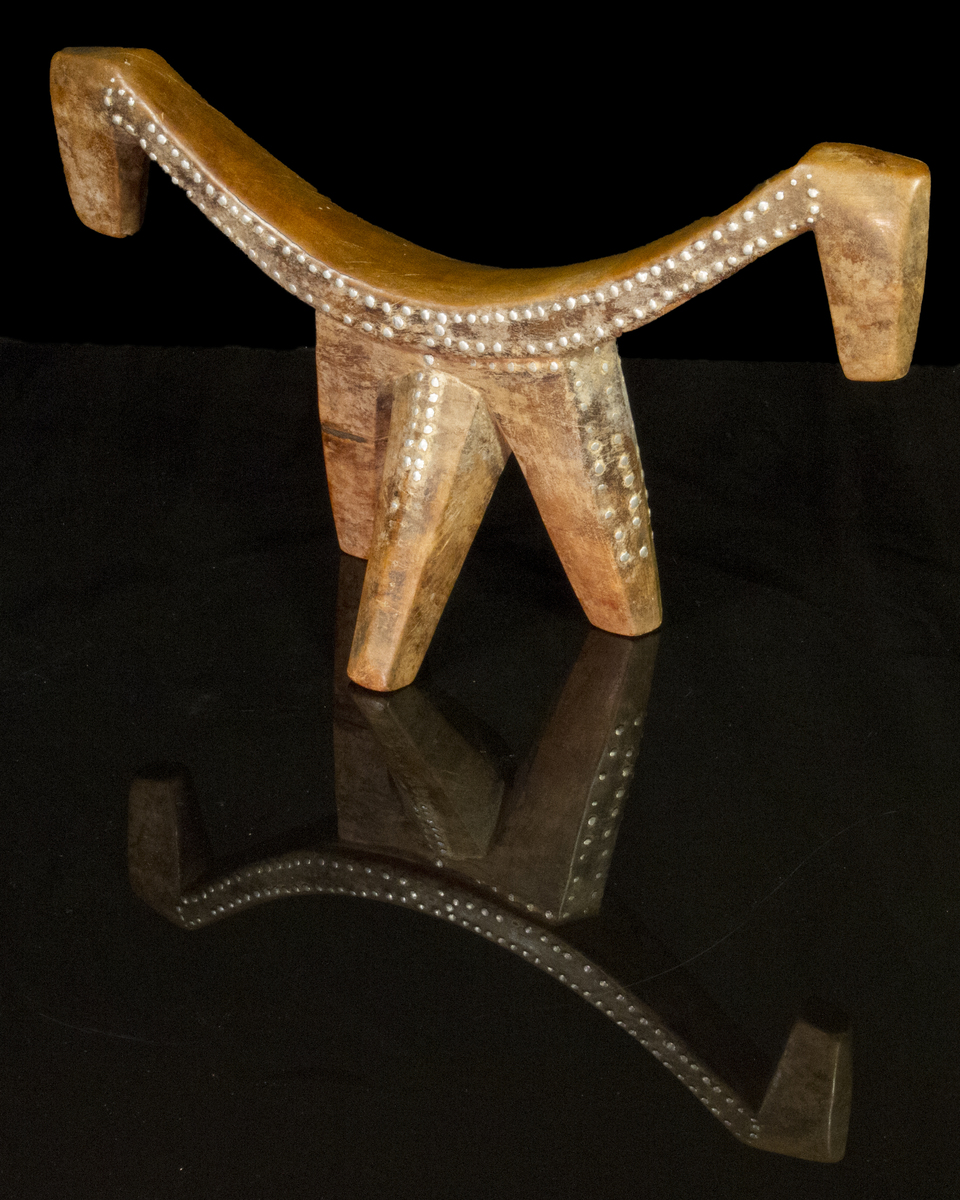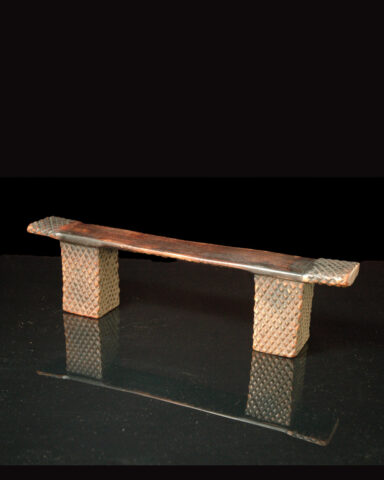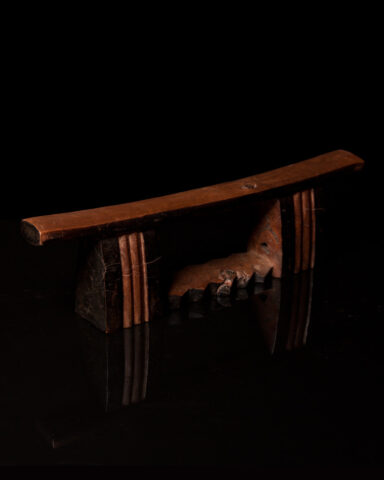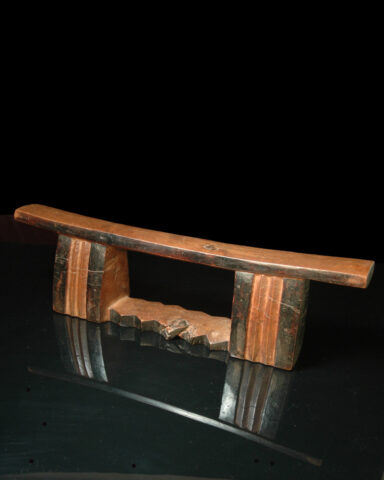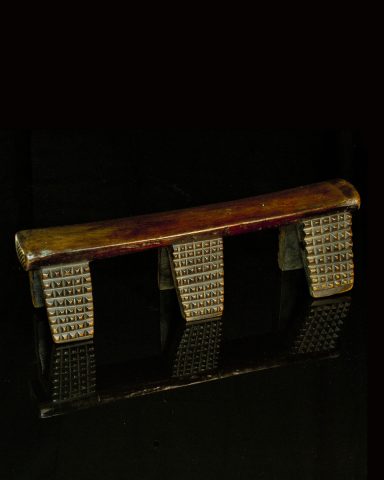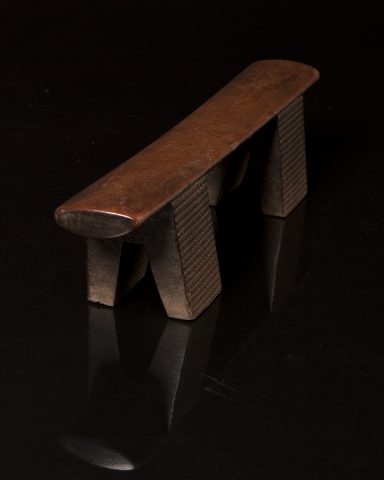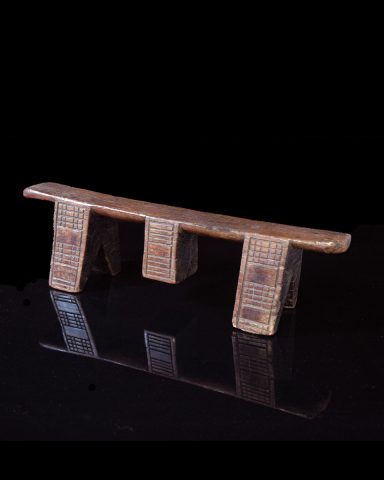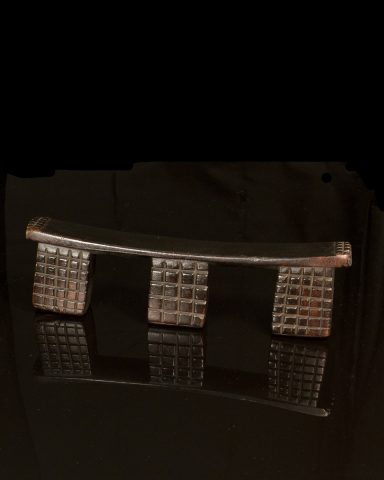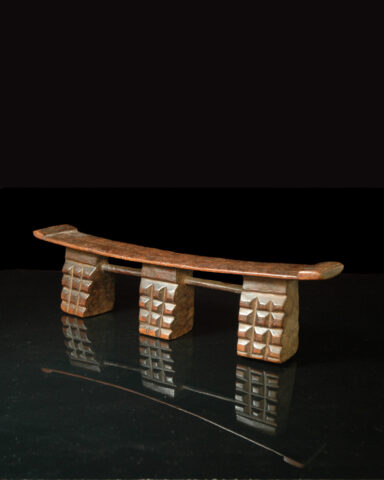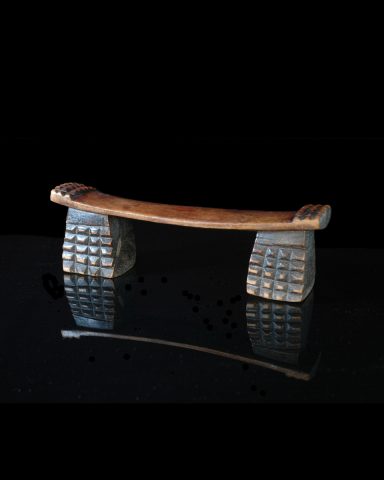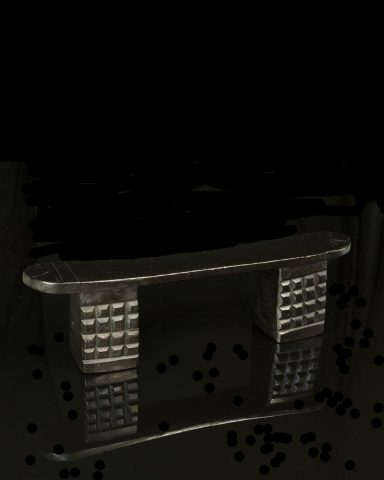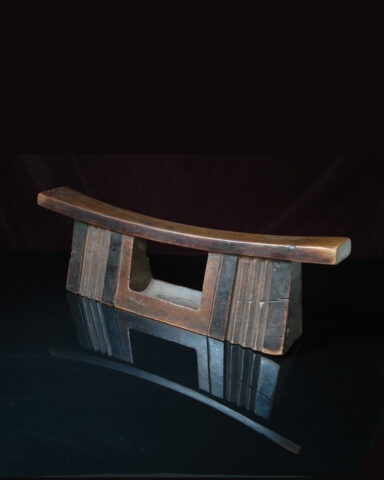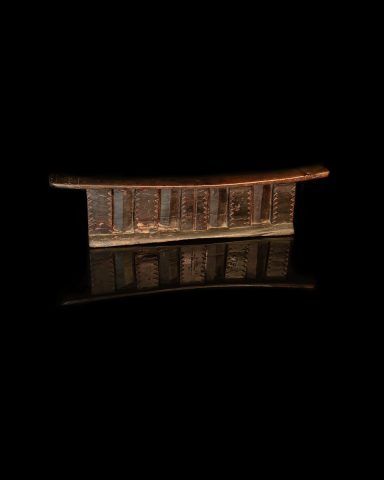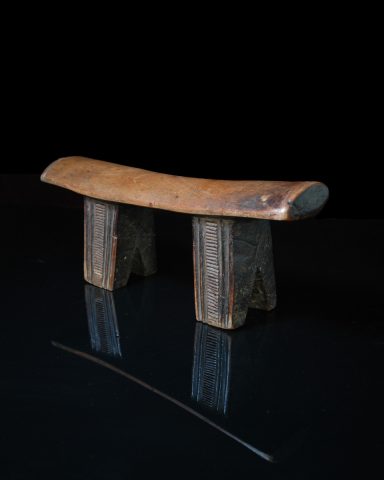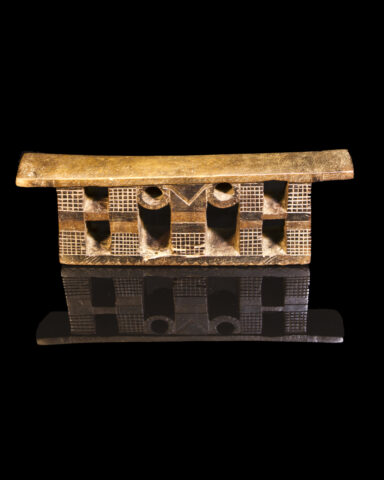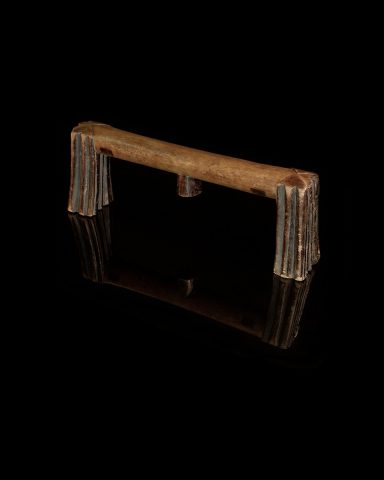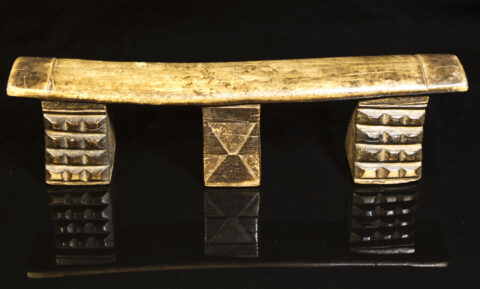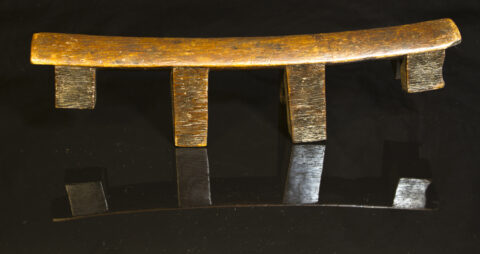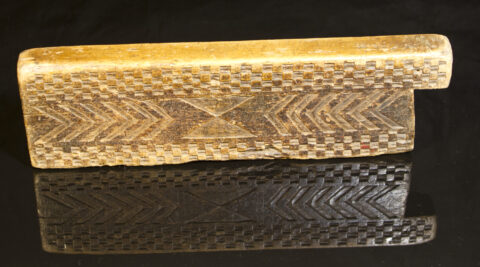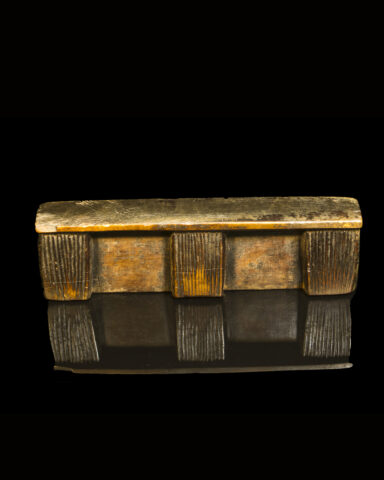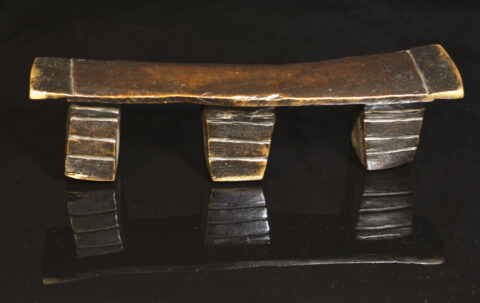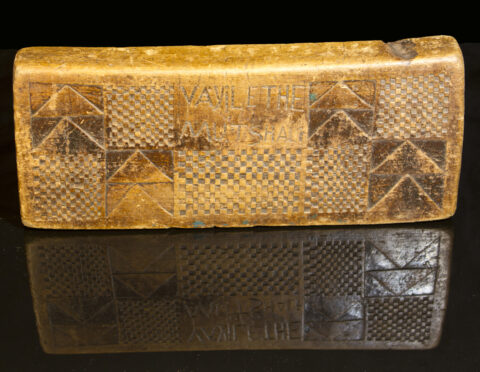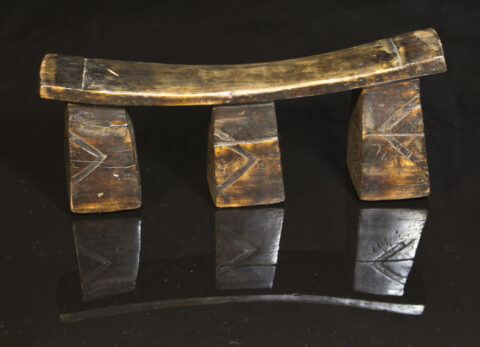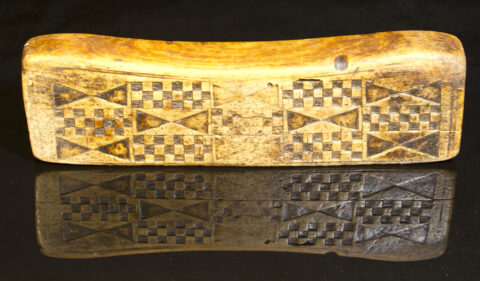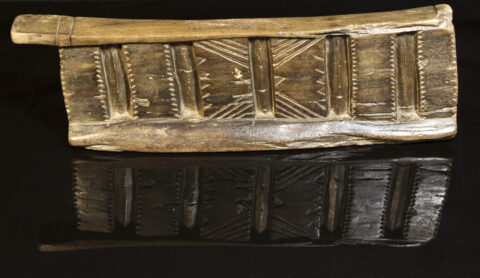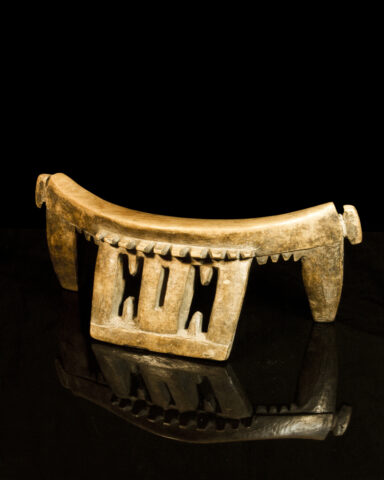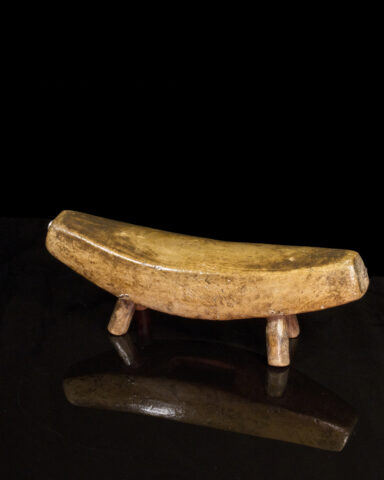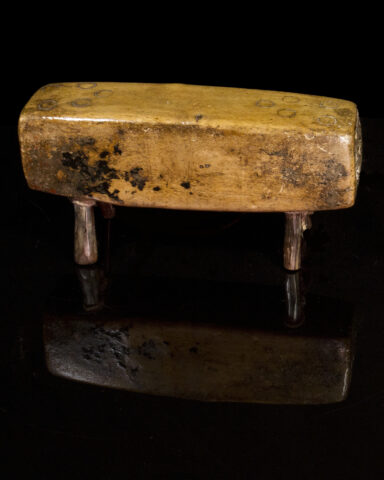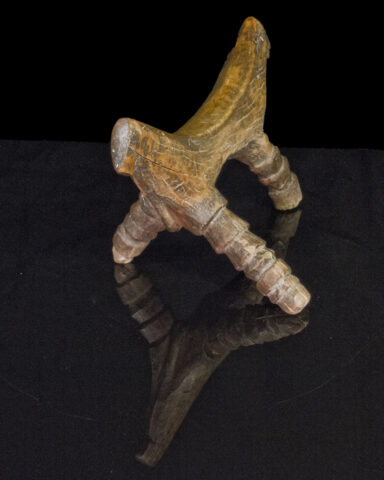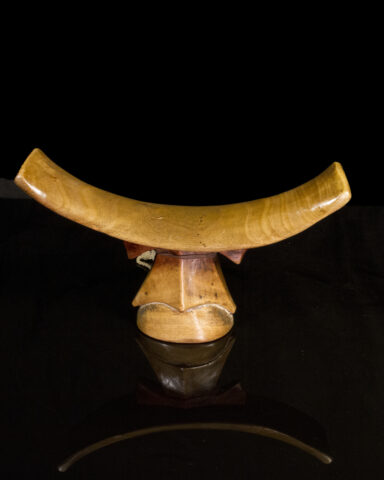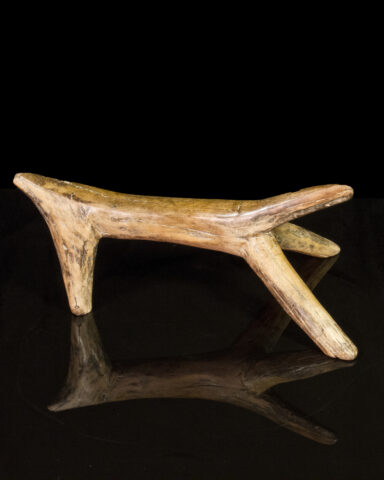Description
This headrest was constructed and designed by the Dinka People of the Republic of South Sudan.
They are hand sculpted from a single, hardwood block, either flat or beveled on top, and feature two or three legs (as in this object) or “links.” By social custom, this headrest is frequently offered to the bridegroom from the bride as an icon of communication with their Dinka ancestors. “(D)reams are considered to be sent by ancestors, and because dreams are dreamt on headrests, the headrest is a kind of antenna, and the strength of the signal is increased if the headrest is inherited from a senior relative” (Nettleton 2007). It is also believed to be symbolic of procreation with cattle and human descendants in agrarian societies. Imbued with the masculine quality of “ubunkunzi” (i.e., “like a bull”/“bullness”), the Dinka headrest signifies a virility indispensable to the survival of one’s family and the extended ethnic group.
REFERENCES:
Bishop, S.D. 1986. African Headrests. Scholar.ufs.ac.za.
Johannesburg Art Gallery. 1991. Art and Ambiguity: Perspectives on the
Brenthurst Collection of Southern African Art. Johannesburg: Johannesburg Art Gallery.
Nettleton, Anitra. 2007. African Dream Machines: Style, Identity and Meaning of African Headrests. Johannesburg: Wits University Press.


